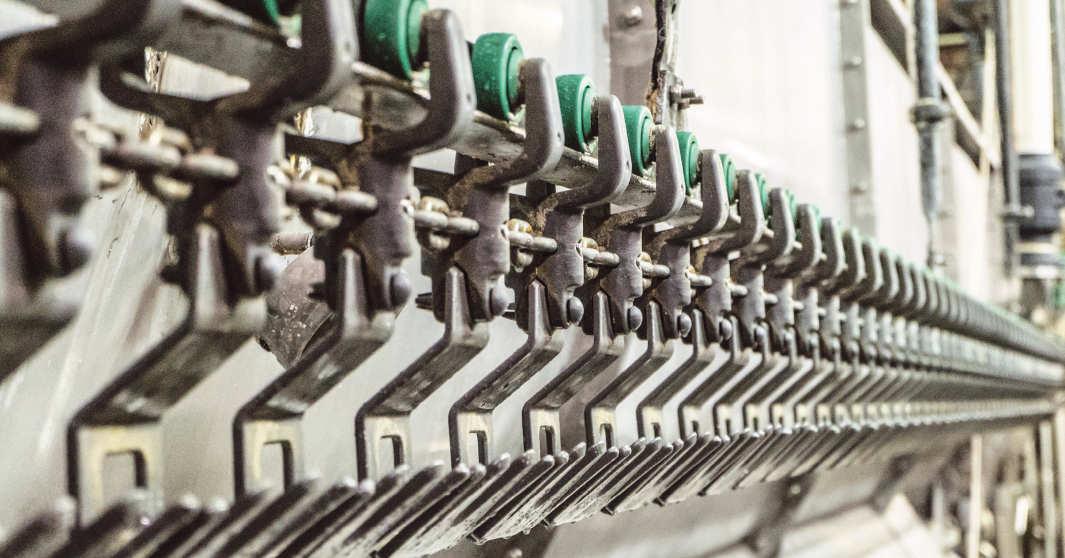
3 minute read
Poultry gets automated treatment
Advanced technology and the assistance of artifical intelligence is propelling the poultry processing industry into an automated future.
THE ART OF poultry processing can be an arduous challenge, but one that is being made significantly less so due to the developments of advanced automation within the industry. Automation has the ability to address the challenges posed by the laborious process, as well as harness the potential to improve efficiency, reliability and predictability of the processing operations.
The North American poultry market in particular is gearing up to extend the use of automation in food processing, however, in order to implement a successful automated process, a workforce must still be present within the processing plants. Systems still have to be implemented, supervised, operated and maintained by people which is aiding the delay in making a fully automated processing system become the industry standard.
Along with automation comes the challenge of digitisation as software plays a critical role in the modern poultry processing industry. Software can range from controlling and monitoring production equipment and machinery to managing inventory and supply chain logistics, which presents an entirely new host of challenges in the form ensuring the correct use of data. Each automated piece of equipment contains a great deal of detailed data. However, isolated machinery only provides isolated information, meaning it can be impossible to combine and analyse the information from different sources for a complete view of the production process, limiting the opportunities in identifying inefficiencies.
Marel, a leading food processing company, has created a magnitude of software solutions to mitigate against the challenges presented by automation. The Innova platform offers many modules that can manage the inventory and supply chain logistics while helping optimise the flow of materials, including tracking inventory levels, coordinating transportation, and ensuring end-to-end traceability within the plant. During the Poultry Tech Summit 2022, Jay Russell, Marel key account manager, said, “By connecting all of our equipment and using the data it generates, we increase the level of consciousness in the industry. An integrated process flow enables realtime adjustments to the production process to improve profitability.”
Marel is one of the pioneering food processing companies that has implemented automated technology to transition away from manual processing systems. The first step towards that journey is for plants to be equipped with an overhead conveyor, stunner, scalder and a defeathering system to allow for the processing of a larger quantity of birds. Processing plants ranging from 500 to 2,000 bph can all benefit from the aforementioned equipment, it just requires added modules or the next grade of systems to cater for the increased capacity.
Transportation automation
The future of poultry transportation is set to change drastically with the development of automated processes. The systems may eliminate the transport of live birds entirely in a bid to minimise stress-factors which can seriously harm the livestock. Processes associated with stunning and shackling the birds may be moved upstream to the farm. Robot technology will then herd the birds into a stunning station before shackling them and transporting the livestock while keeping track of each individual bird’s data, thus allowing information regarding health and weight to be conveyed to the processing plant ahead of time.
This advanced process has the ability to minimise labour requirements, lower the cost of transportation and improve sustainability for the overall process. Yield efficiency is also improved by the accurate accounting of the poultry and sending that data ahead to the processing plant to customise the process.

Researchers in Arkansas and other US states have been given a
US$5mn grant by the US Department of Agriculture’ National Institute of Food and Agriculture to increase AI usage and robotics in the poultry processing industry in order to reduce waste and detect pathogens. The grant will be used to establish the Center for Scalable and Intelligent Automation in Poultry Processing, where researchers from five institutions will adapt robotic automation systems to aid with processing.
New technology is needed within the industry, particularly following the Covid-19 pandemic which had detrimental effects on the workforce in processing plants. Automated technology may help to solve the shortage that still hinders the industry, but further technological advancements still need to be made in order to utilise the technology to its fullest.
“Human deboners leave about 13% of meat on the bones,” Jeyam Subbiah, project director, said, “Automated deboners leave 16-17%. On an industrial scale, that’s a significant loss in value. We will use artificial intelligence and virtual reality to improve precision and reduce wastage.”
The poultry processing sector looks to firmly embrace an automated future as technological advancements and an increased reliance on artificial intelligence is posed to not only increase efficiency and improve the yield quality, but will also go a long way to bridge the employee-shortage gap that still threatens the industry following the pandemic. ■










